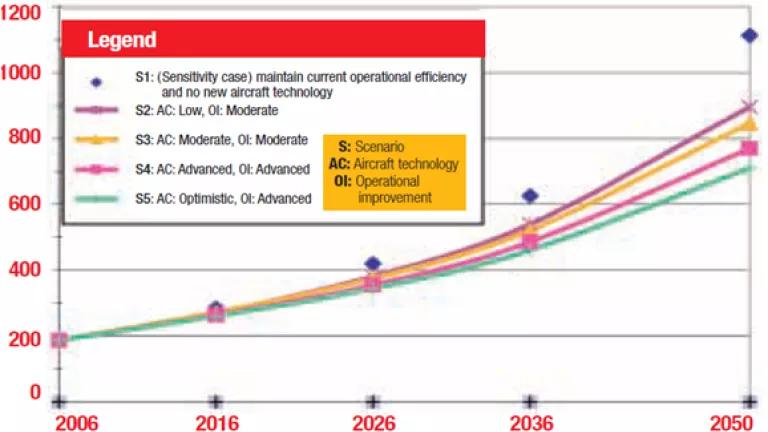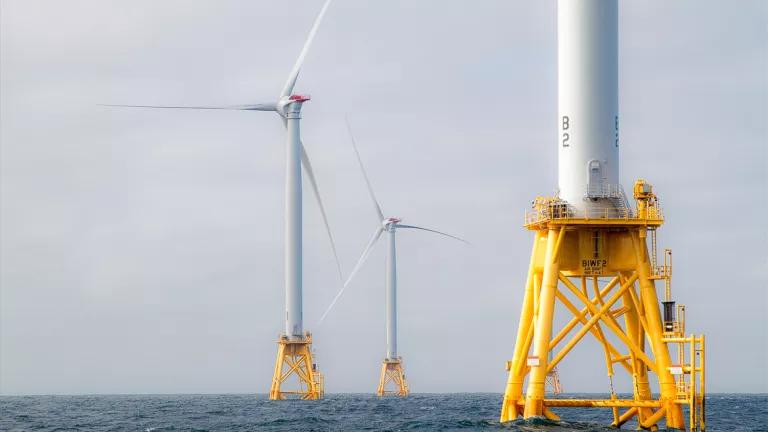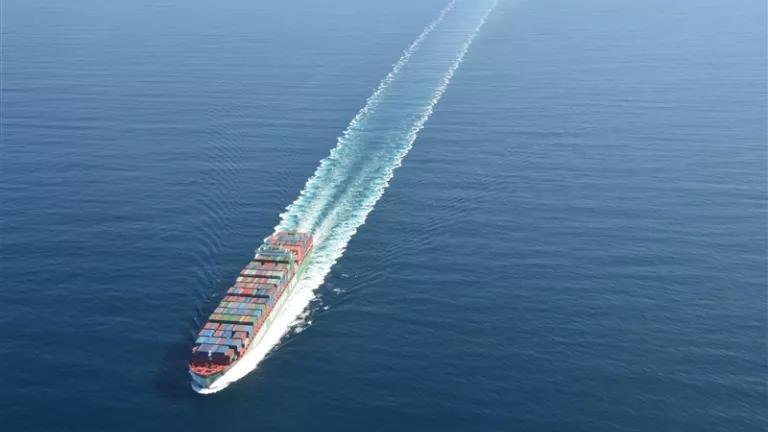
Unfortunately the debate around the European program to control carbon pollution from aviation is heating up with the US “objecting”, the US-based airlines squawking, and the aviation industry boosters in the US house trying to stop Europe for controlling pollution. Of course, most airlines (US, European, and Chinese) would prefer not to have any system that controls their pollution so their claims of the sky falling aren’t surprising. Sadly the debate hasn’t focused on the fact that countries have a choice – develop, implement, and enforce an equivalent program at home and the Europeans will allow their carriers to be excluded. None of the governments that are grumbling about the European program have proposed an equivalent program. If they did it would be a completely different story. Instead, these countries are basically saying: “we don’t like the European program, but we aren’t going to do anything to reduce aviation’s carbon pollution”. That isn’t a defensible position, so hopefully these countries will quickly shift their attention to the steps that they will take at home.
While we wait patiently for these countries to come up with their own actions to control carbon pollution, the European program will move forward as required by law. So it is worth looking at a number of the myths floating about this program.
Myth #1: The EU is bullying other countries instead of working through the international system. Not true. The International Civil Aviation Organization (ICAO) was tasked in 1997 with implementing policies to reduce aviation’s carbon pollution. After almost 15 years of debate on various enforceable programs, ICAO has only come up with an “aspirational global efficiency target”. This target basically says: “we’ll try to meet this target – there are no penalties if we fail – and we’ll reduce the rate that our sector’s emissions grow—but they’ll still grow in absolute terms”. With the impacts of global warming already being felt that isn’t a defensible position. We need real action.
The EU has always stated its preference for a global scheme through ICAO, but faced with years of inaction (as this timeline shows) they took the next logical step and moved forward at home. So in 2002 the European’s announced that while a global approach was their preferred outcome, they would not sit idly by waiting for a global agreement while the aviation sector’s carbon pollution continued to rise. In 2004, ICAO decided not to proceed with developing a global system and instead focused on developing guidance for countries who wished to incorporate aviation into their own emissions trading system. And then in 2010, ICAO agreed to global “aspirational goals” to cut pollution but implied no individual responsibility for each country to act. So the Europeans waited, waited, and waited…and then acted. That isn’t bullying. That is leadership. I know firsthand as I actively participated in those debates for 5 years.
Myth #2: Their program is not in accordance with international law. For many years this claim has been raised for almost any action – besides voluntary measures – that were proposed for addressing aviation’s carbon pollution. The European Aviation Directive is well within the requirements of international law. In fact, independent assessments have concluded that the inclusion of carbon pollution from international aviation in the EU’s program: “is consistent with all relevant international provisions and therefore permissible under international law”. United/Continental and American Airlines, as well, as the Air Transport Association – the trade association for US carriers – have challenged the program in the European Court of Justice. So of course they make the claim in press statements that it is illegal. The United Kingdom is defending the European program against the claims of the US-based carriers. And a number of US and European organizations have intervened in support of the European program after reviewing the legal claims by American, Continental/United, and the Air Transport Association. So claims that this program is illegal will be decided by an independent court system – not by press statements for those bringing the case.
Myth #3: By covering emissions that occur over the airspace of other countries the EU program is illegal or asserts a new precedent. These emissions aren't owned by the US. So even if the emissions occured almost completely over the US, claims that these emissions “aren’t under the European jurisdiction” don’t stand up. The European aviation program doesn’t tell an airplane company how to operate its flight outside of Europe. They aren’t saying fly at this speed, using this type of aircraft, and using this fuel. The European program says that if your airline wants to land in our airport it must control the carbon pollution associated with that flight. The carbon pollution from that entire flight is causing global warming As Peter Goldmark from EDF pointed out: “…it's like many American laws that set requirements for aircraft and ships coming in and out U.S. territory. A good example is the U.S. law passed after the Exxon Valdez spill. That law requires all ships carrying oil in U.S. waters to be equipped with a double hull -- even though that means tankers must have double hulls when they leave their ports of origin in Europe or anywhere else.”
Indeed the EU program even allows for countries that take action at home to address these emissions in an “equivalent manner”. Any country that can prove that it has an "equivalent" system addressing aviation’s pollution can be eligible to have its carriers excluded from the European program. The onus is on all countries, including the US and China, to develop, implement, enforce, and prove that it has an equivalent system. So instead of arguing over the merits of the program, all countries should take equivalent action at home so they can prove that the European program isn’t needed for their carriers. Countries can’t say: “I don’t like your approach, but I have nothing better”.
Myth #4: This will lead to massive price increases and thus have huge impacts on airline travel and the airline industry. Once again we’ve heard this claim about every control program envisioned for the aviation sector. In fact when the European’s had this system independently evaluated they found that the program would add a mere $11-57 to a roundtrip ticket – less for shorter flights.* On a ticket that easily costs $800-1400 this is a very marginal price change. In fact, it is about the same as the price that airlines charge per checked bag on a domestic flight in the US – which is typically $20 per bag. So as a proportion of the total ticket price, these ticket price increases are modest. Instead, it will provide an incentive for the airlines to find the best way to reduce their fuel use and encourage them to purchase the most efficient aircraft that are already rolling off the production line. These are investments that will spur savings to American consumers as the airlines will reduce their fuel costs with more efficient planes and create U.S. manufacturing jobs as US-based carriers turn over their aged fleet.
The US Air Transport Association claimed that: “the U.S. airlines will be required to pay more than $3.1 billion into EU coffers between 2012 and year-end 2020. That outlay could support more than 39,200 U.S. airline jobs”. That works out to $344 million per year on average OR $10.6 on average per passenger each way.** This is still less than the increased cost that airlines charge for a checked bag and I don’t see them claiming that the bag costs will lead to job losses.
It is like clockwork that we hear industry claim that the “sky will fall”. Instead this program will spur innovation, reduce carbon pollution, and drive investments that save consumers money as the airlines reduce their fuel costs. The world won’t fall apart with these costs, but if we don’t address global warming these costs will look very minor compared to the damages that will occur.
Myth #5: The program would cause airlines to reroute to avoid direct flights to the EU. This is another claim that is often thrown around, that just doesn’t stand up to the facts. There are two basic claims: (1) that travelers will “drive across the border” to board a flight not subject to the EU’s rules; and (2) whether airlines would reroute – add a stopover instead of fly direct to the EU – in order to avoid the EU program. On both issues, the European’s independently assessed these claims.
Here is what they had to say on the first claim that people will “drive across the border” (from the European Commission Impact Assessment, pg. 31-32):
“…Since there are very few major airports just outside EU territory, the option to change the airport of departure or destination from an EU airport to a non-EU airport often does not exist…In addition, the benefit from potentially lower airfares would have to be balanced against increased travel time (across EU borders)…It seems unlikely that these price increases would divert significant amounts of business, be it passengers or freight.”
On the second claim that airlines would reroute – make a stopover or change final destination – to avoid the EU program the independent analysis found: (from the European Commission Impact Assessment pg. 32):
“…the change in distance travelled when switching from an EU hub to a non-
EU hub is a relevant consideration, since longer distances mean more fuel being burnt in order to reach the hub, more fuel needing to be carried (which in turn raises fuel consumption rates) and, if an extra stop was introduced, more fuel being burnt through the landing and take-off cycle.”
So the independent analysis looked at a case where a direct flight chose to instead take a stopover in Dubai. Here is what they found: “The results indicate that EU ETS allowance prices would have to exceed some 75€/tCO2 [$107] before the extra cost per seat imposed by the full EU ETS coverage of nonstop services…would fully outweigh the advantage in fuel costs that non-stop services enjoy.” The European price isn’t predicted to get even close to that level so this claim that direct flights will now stop in “Dubai” just doesn’t stand up.
Logic also tells us that these claims don’t stand up. Passengers won’t choose to add hours to their flight just to avoid paying $11-57 per ticket. When I buy a ticket I consider lots of factors, including how many stops I have. Travelers won’t add hours to their flight for such a small change in price.
Myth #6: The aviation industry is such a small source of emissions shouldn’t we focus elsewhere. This point has been made over the years to try to deflect attention away from the carbon pollution that the aviation industry is emitting. Aviation’s carbon pollution is about the same as the entire emissions from the United Kingdom – a government that has a legally enforceable commitment to reduce their emissions. Unfortunately an industry that contributes the same amount to global warming isn’t
following the UK lead in significantly cutting its emissions. And left unregulated aviation’s carbon pollution is projected to quadruple by 2050 (see figure).
We don’t tell the U.K. you are too small to help us address global warming. And we don’t tell fast growing countries or sectors you are excluded from helping us deal with this challenge. So we shouldn’t apply that same ill logic to the aviation industry.
Myth #7: Opposition to the EU program is widespread and across the political spectrum. Some have given the impression that environmental organizations are opposed to the EU program since we have participated in discussions between the US and EU. Let me be 100% clear, NRDC is strongly opposed to the US position. The European program is a reasonable step to begin to reduce aviation’s carbon pollution. NRDC and other environmental groups are strongly opposed to the House bill and the position of the Obama Administration. We have informed the Administration and Members of Congress of this view.
The Members of the US House that are trying to stop the European program are opposed to any action on global warming and receive most of their political contributions from the aviation industry. These Members don’t represent the mainstream view of the American people that we need to reduce our carbon pollution.
--------------------
One Obama Administration official recently stated: “It is for the U.S. to decide on targets or appropriate action for U.S. airlines with respect to greenhouse gas emissions.” So what measures will you undertake that will significantly reduce aviation’s carbon pollution? Because doing nothing to control carbon pollution from aviation isn’t the position of a leader on global warming.
------------------
* From the European Commission impact assessment (pg. 34-35):

** The FAA predicts (table 7) that total “US commercial air carrier revenue passenger enplanements to the Atlantic” for 2012-2020 will be 32.3 million on average.




